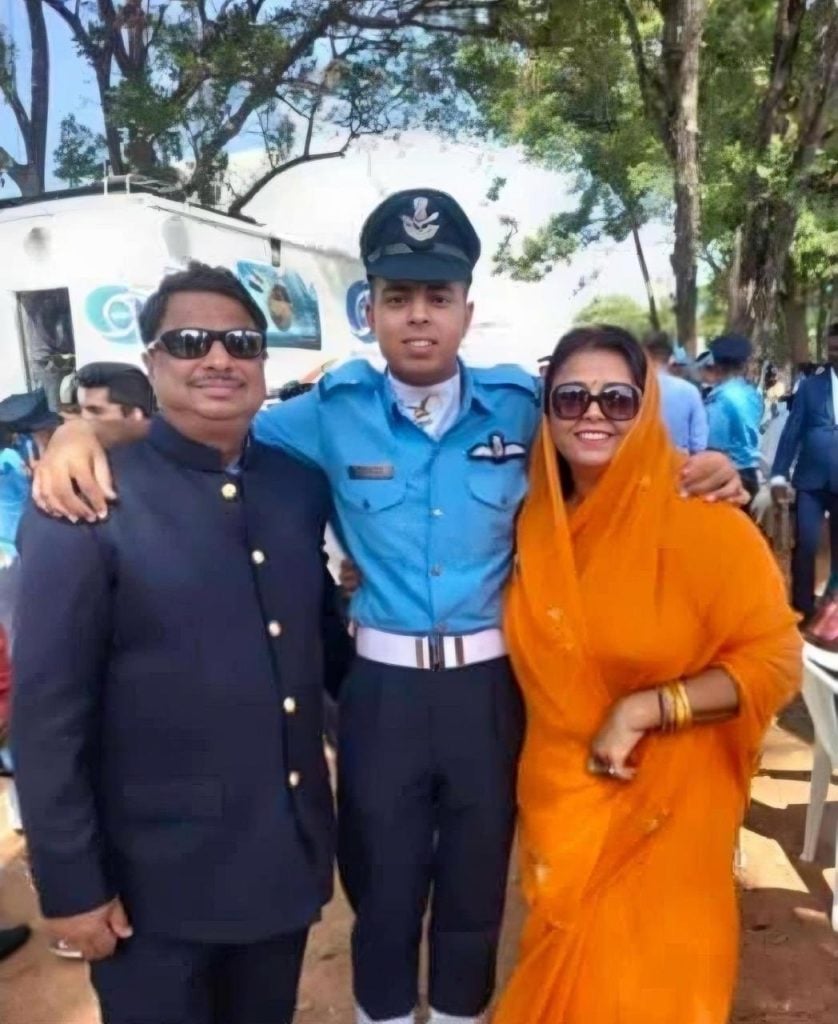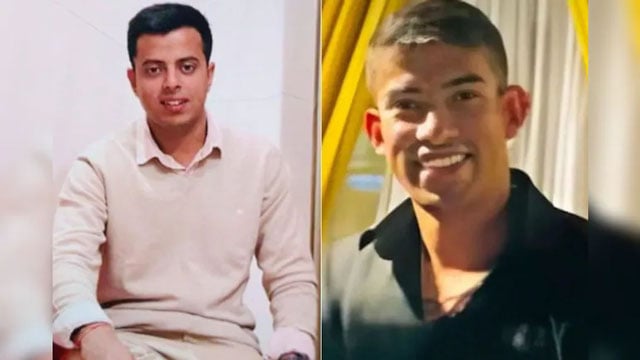“In skies where thunder roars, they flew with valor and fell as heroes. The nation salutes Flt Lt Rishi Raj Singh and Sqn Ldr Lokendra Kumar Sindhu. Their courage will echo in the winds above forever.”
On July 9, 2025, a Jaguar trainer aircraft of the Indian Air Force (IAF) crashed during a routine training sortie in Churu district, Rajasthan, killing both pilots on board. The IAF confirmed the loss of Squadron Leader Lokendra Kumar Sindhu (44) and Flight Lieutenant Rishi Raj Singh (23) in the fatal accident, which occurred near Bhanoda village around 1:25 PM.
No civilian casualties or property damage were reported. The IAF has initiated a court of inquiry to determine the cause of the crash.
What Happened in the Jaguar Crash?
The ill-fated aircraft was a SEPECAT Jaguar, a twin-engine, deep-penetration strike aircraft of Anglo-French origin. It took off from the Suratgarh Air Force Station and crashed in an agricultural field during a training mission. Eyewitnesses described hearing a loud explosion followed by black smoke billowing from the wreckage.
Debris was found scattered over 200 feet. A local farmer, who saw the jet go down, said, “The pilot steered the aircraft away from the village to avoid loss of civilian life.”
This was the third Jaguar crash reported in 2025, after previous incidents in Haryana (March) and Gujarat (April).
Also Read: Indian Air Force Confirms Death of Both Pilots in Jaguar Crash; No Civilian Damage Reported
Squadron Leader Lokendra Kumar Sindhu
Squadron Leader Lokendra Kumar Sindhu, a native of Rohtak, Haryana, was a decorated and experienced pilot. He was commissioned into the IAF in 2016 after training at the National Defence Academy (NDA).
Family Background:
- Son of a retired university superintendent and a teacher.
- Youngest among three siblings.
- His sister was a short service officer in the IAF; his brother works in an MNC.
Personal Life:
- Married during the COVID-19 pandemic.
- Became a father on June 10, 2025, less than a month before the crash.
- His wife was staying at her parental home in Hisar when she received the heartbreaking news.
Family members described him as a brilliant student and a humble officer who always dreamed of flying for the nation.

Flight Lieutenant Rishi Raj Singh
Flight Lieutenant Rishi Raj Singh, 23, hailed from Pali district, Rajasthan. As a young pilot, Singh was known for his sharp skills, discipline, and enthusiasm. His untimely death shocked his hometown of Jodhpur, where residents mourned the loss of a “rising star.”
Social media posts and tributes praised his selfless act of not ejecting, in an effort to guide the aircraft away from civilian areas. Singh’s sacrifice has struck a deep chord with youth across India, symbolizing courage beyond age.

The Legendary No. 5 Squadron ‘Tuskers’
Both officers belonged to the No. 5 Squadron of the Indian Air Force, also known as the “Tuskers.”
- Established in 1948 at Kanpur.
- India’s first bomber unit, later transitioned to Jaguar aircraft in 1981.
- Participated in major wars — including 1965, 1971, and the Congo UN mission (1961).
- Currently based at Ambala Air Force Station, under Western Air Command.
The Tuskers are a strategic deep-strike squadron, and their legacy is deeply embedded in India’s air combat history.

Jaguar Pilots: The Backbone of India’s Deep-Strike Capability
The Jaguar, also called “Shamsher” (Sword of Justice), is one of India’s most versatile strike aircraft. It’s capable of:
- Low-level penetration missions
- Precision bombing
- Maritime strike operations
- Carrying nuclear weapons
Flying the Jaguar demands immense skill and composure. It lacks modern automatic ejection systems, making missions even riskier.

A Harsh Reality: The Jaguar’s Ageing Airframe and Crashes
This crash highlights growing concerns about the ageing Jaguar fleet:
- Originally designed in the 1960s.
- Over 50 recorded crashes in 45 years.
- On average, 2–3 accidents per year in recent times.
- Many lack modern cockpit tech and ejection systems.
While the Jaguar’s retirement is scheduled around 2032–2035, India continues to operate them due to a shortage of combat aircraft and the platform’s unique capabilities.
Modern jets like the Rafale, Su-30MKI, and Tejas Mk1A are expected to gradually phase out the fleet.
Honoring Their Legacy
Squadron Leader Lokendra Kumar Sindhu and Flight Lieutenant Rishi Raj Singh are more than names in a headline — they are symbols of duty, courage, and ultimate sacrifice.
Their act of steering the doomed aircraft away from civilian homes reflects the core ethos of the Indian Air Force: “Touch the Sky with Glory.”






